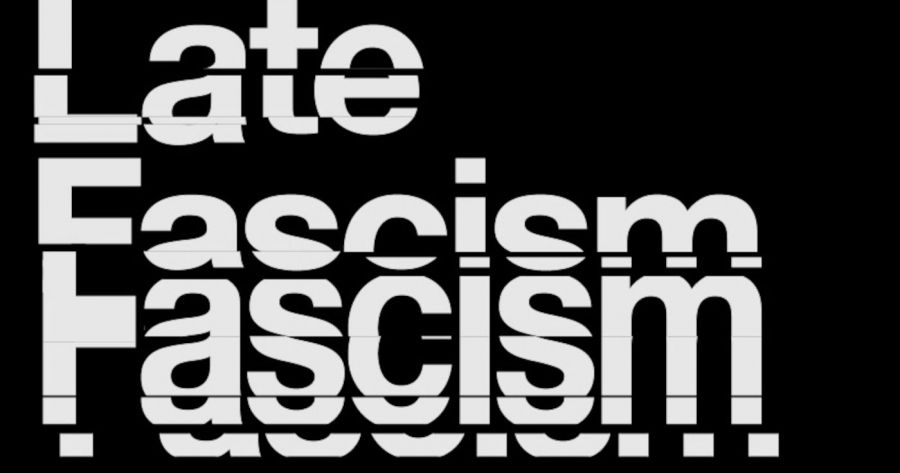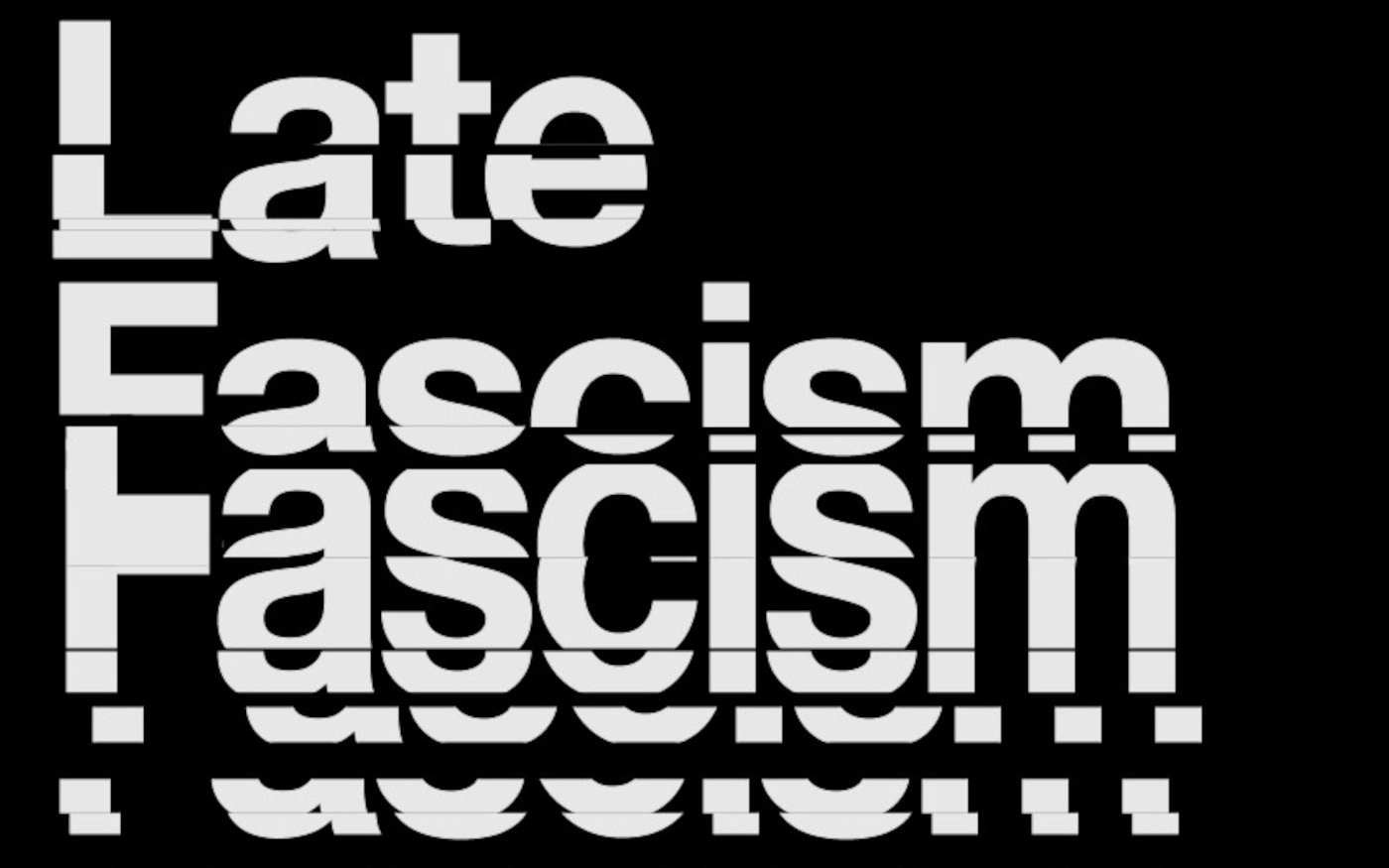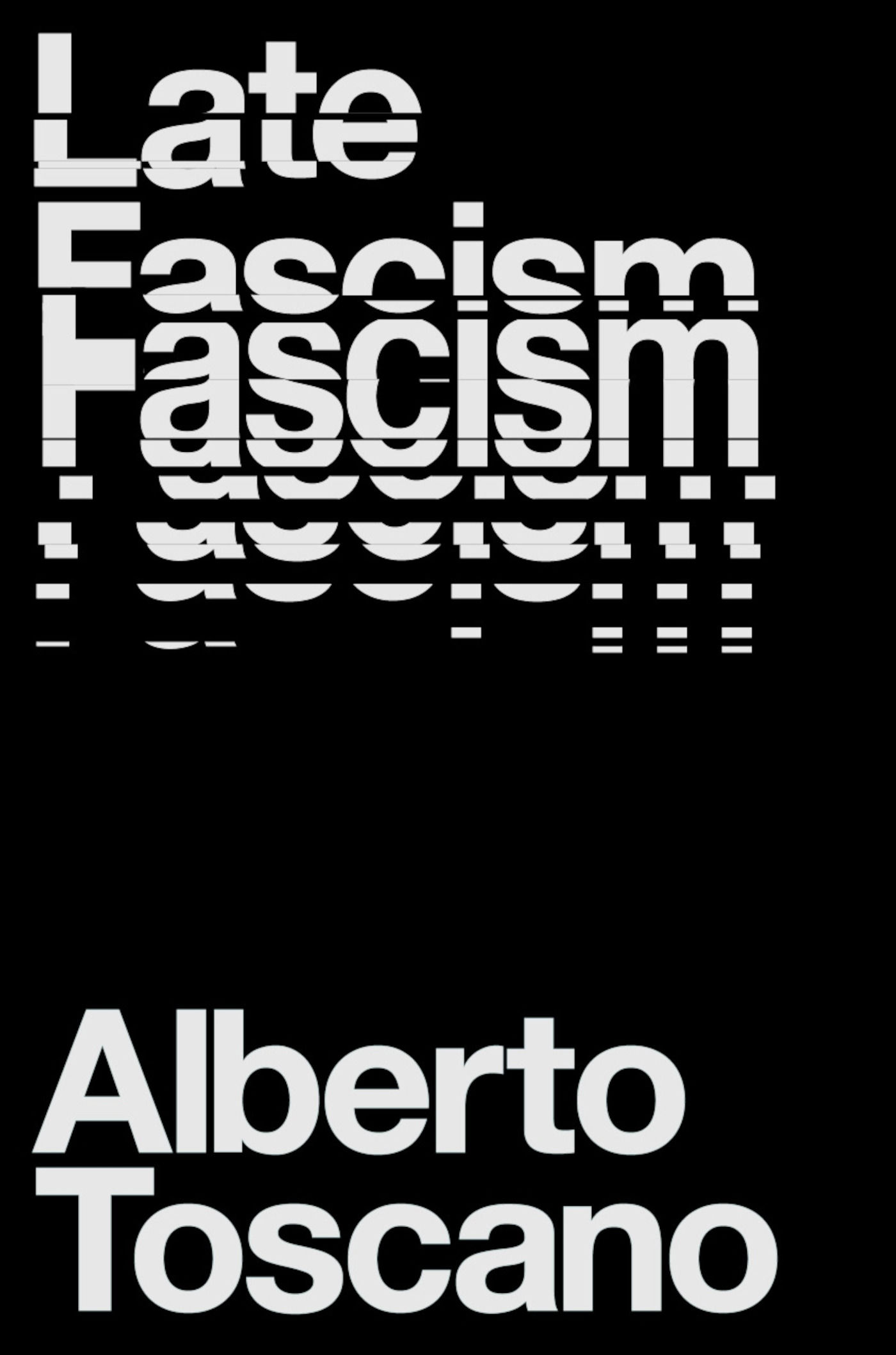
- Free Article: No
- Contents Category: Politics
- Review Article: Yes
- Article Title: Cult of the archaic
- Article Subtitle: The swindle of fascist fulfilment
- Online Only: No
- Custom Highlight Text:
Already it has been a big year for fascists. On Australia Day, a handful of neo-Nazis from across Australia assembled in Sydney. Dwarfed by tens of thousands of protesters at Invasion Day rallies, the fascist stunt still generated the desired confrontation with the state and response from journalists drawn into the spectacle. Two weeks earlier, German investigative journalists published details of a late-2023 meeting in Potsdam, outside Berlin. At a neo-baroque lakeside hotel, an assortment of old money, political chancers, and neo-fascist intellectuals discussed a proposal for ‘remigration’. Among the retired dentists, bakery franchisers, and parliamentary staffers was Martin Sellner, the one-time, hot-young-Austrian-face of the European identitarian movement – a man so reactionary that even post-Brexit Britain denied him a visa.
- Featured Image (400px * 250px):

- Alt Tag (Featured Image): Ben Gook reviews ‘Late Fascism: Race, capitalism and the politics of crisis’ by Alberto Toscano
- Book 1 Title: Late Fascism
- Book 1 Subtitle: Race, capitalism and the politics of crisis
- Book 1 Biblio: Verso, $36.99 pb, 212 pp
- Book 1 Cover Small (400 x 600):

- Book 1 Cover (800 x 1200):

The reactionary conspiracy theories of racial replacement of white populations with immigrants are given their vicious response in remigration. This calls up a ‘border fascism’, the organising principle of much far-right thinking today. It offers violent fixes for a conjuncture in which mass migration from wars and economic exploitation has converged with the climate crisis.
As Alberto Toscano notes, expanding on the work of Brendan O’Connor, these fortified borders can be external (patrolled physical barriers) or internal (lines dividing the populace, such as gender and race). A ‘racial-civilisational crisis is spliced with scenarios of scarcity and collapse’, conjoining current crises of capitalism with fascism’s fixation on ‘epochal loss of privilege and purity’. In a word, Toscano defines fascism as ‘an anti-emancipatory politics of crisis’. A product and producer of crisis, it ‘strives violently to enshrine inequality by creating simulacra of equality for some – it is a politics and a culture of national-social entrenchment, nourished by racism’.
Toscano outlines – in this book on the analogies, disanalogies, and non-analogies of today’s fascism and its historical variants – that the ‘lateness’ of fascism concerns its anachronism. The classic fascist fixes were bound to the capitalist crises of their time, as well as the era of mass manual labour, universal male conscription, and imperialist projects.
As Toscano points out, there is an irony in how fascists today are invested in the white, industrial, patriarchal, and social democratic modernity that followed the wartime defeat of fascist governments. Fascists now seek to revive and reimpose this era of late Fordist manufacture and apparent harmony in race and gender relations, taking it as a time of prosperity and pride, the glorious late coming of Order and Tradition.
All ideologies are incoherent, but the hallmark of fascism is the coexistence of a deep investment in muscular, scientific modernism – all that gleaming steel and scientific racism back then, all those gleaming social media interfaces and protein powders now – alongside the deep myths, occult beliefs, and invented traditions of a putative past. Guy Debord called fascism ‘a cult of the archaic completely fitted out by modern technology’. This culture uses myths, symbols, and rituals to create a sense of authority and tradition that is beyond question.
Among those attracted to fascism, a feeling of impending – or actual – social catastrophe seems to be a catalyst or even, in many cases, a desire. Fascism feeds off a sense of disaster and the possibility of rebirth, hence the investment in violence and apocalyptic fantasies. It is a religion of death, seeking to transcend the present and achieve a mythical rebirth.
If fascism is an ideology of retribution and renewal, it appears as a possibility or contender at moments when the present is perceived as decadent, decayed, or degraded. Today, it circulates amid videos or podcasts railing against degenerate élites and outlining nefarious conspiracies, organised by a shotgun algorithmic marriage of wellness influencers and jilted young men. Fascism is not just a specialised and authoritarian state, but also a form of popular attachment and pleasure that relies on delegated and eroticised violence. It offers, as Ernst Bloch wrote, ‘the swindle of fulfillment’.
The impetus for Toscano’s book is the abandon with which fascism has been discussed in recent years, particularly since the election of Donald Trump in 2016. Much of this discussion – in liberal broadsheets and paperbacks – has taken the form of checklists or stage-by-stage historical accounts to assess whether we’re living in fascist times or not.
Toscano frustrates those looking for such easy answers. His book is a ‘metacommentary’ on historical and conceptual debates about fascism. He wants to displace the key analogies – Italy and Germany, 1920s and 1930s – to see how thinkers over the past century have responded to the varieties of fascism that emerged in different settings. Analogies may offer guidance, foresight (via hindsight), and intellectual shelter, but they can also be red herrings, promising preparedness for a profoundly different situation.
There are, nevertheless, portents of a proto- or pre-fascist situation. Fascism emerged as a way of resolving the contradictions and failures of liberal democracy and capitalism, by using violence and authoritarianism to restore order and stability. Grégoire Chamayou’s analysis of fascism, discussed here, shows how it adopted a form of liberalism that sacrificed democracy and rights for economic efficiency and security. This resonates with the present situation of neoliberal austerity and authoritarianism. Fascism paradoxically claims to be both above and against the state, while relying on its apparatus of violence and coercion to impose its will and eliminate its enemies.
Since the Nazi era, to a large extent grassroots anti-fascism and state-led anti-extremist measures have focused on incipient fascisms. In the state-led, anti-extremist version of this, the chief goal has been quashing wherever possible the traditional organisational form of the fascist group – violent, masculine, white, nationalist, racist, clean-shaven. In Australia, the swastika and some other fascist hate symbols have recently been banned, an indicator of anxiety about disaffected citizens exiting the political mainstream, if not exactly a convincing, root-and-branch attempt to deal with the growth of fascisms in our neighbourhood. (Remember the Australian-born Islamophobic Christchurch killer?)
Fascism may today be more visibly networked, but it was never as nationally rooted as it liked to pretend, always drawing lessons from a fascist international that included a genealogy in colonial regimes. Extending understandings of fascism from the ‘classical’ vision of the interwar fascisms that crystallised in Europe as a specific type of political regime, Toscano turns to anti-colonial thought, alongside radical Black intellectuals such as Angela Davis, W.E.B. Du Bois, Ruth Wilson Gilmore, and Cedric Robinson.
Across the twentieth century and into the present, these critics and activists have seen the links where others refused to. It was the connection between fascist Europe and its presumed territories, for example, that saw Black solidarity campaigns against the Italian invasion of Ethiopia. In a speech given in 1936, as Hitler and Mussolini menaced Europe, Langston Hughes said that ‘fascism is a new name for that kind of terror the Negro has always faced in America’.
Mussolini clearly stated that colonialism was foundational for fascism, including the Italians’ brutal war against Libya in the 1930s, which also served as inspiration for the Nazis. Anti-colonial thinkers pointed out in the 1930s that European fascists had learned many of their techniques in colonial and slave settings over previous centuries – a ‘fascism before fascism’ that consolidated an imperialist, capitalist world-system along racial lines.
As Toscano argues, fascism today does not primarily take the form – if it ever did, beyond the prominent interwar examples – of the mass party, the street militia, and the charismatic leader. More commonly, it appears in flocks of shitposting, or the stochastic terrorist violence of the young male shooter, or the insurgent candidate within desiccated democracies. These share old-fashioned fascism’s licence to persecute, deputising their violence to a dispersed cadre liberated to commit racist, sexist, and transphobic acts.
The postcolonial fascism of Modi’s India and the neocolonial fascism of Netanyahu’s Israel – and its strange anti-Semitic Euro-pean bedfellows, including Viktor Orbán – are clear signs of this political ideology’s mercurial nature. Nevertheless, wherever it goes, we seem to find the familiar cod-scientific and culturally chauvinistic hierarchies to justify repression, violence, and extermination.
Primo Levi said in the 1970s that every age would see the return of fascisms in new and different materialisations. It arrives with new content, stirring up new hatreds. It is a ‘scavenger’ ideology, as Toscano puts it. Among the materials being fed into the maw today are climate politics. These resonate with younger demographics, and the more intelligent far-right operatives have given their politics an eco-twist, leaving behind as fossils the climate deniers of an earlier generation.
The stand-by fantasies of fascists – domination of women, nature, and racial inferiors – are being reimagined, particularly given the manifold failures of other responses to the planetary crisis. The recent international rise of ecofascism is worrying for Australia, given that the existing faultlines in our political geography align with the climate disasters that will happen with increasing regularity and force.
Yet such forecasting and prognostication about the future of fascism is problematic, as Theodor Adorno observed, in fitting terms, in a lecture on ‘Aspects of the New Right-Wing Extremism’ in 1967.
Perhaps some of you will ask me what I think about the future of right-wing extremism. I think this is the wrong question, for it is much too contemplative. This way of thinking, which views such things from the outset like natural disasters about which one makes predictions, like whirlwinds or meteorological disasters, this already shows a form of resignation whereby one essentially eliminates oneself as a political subject; it expresses a harmfully spectator-like relationship with reality.
If there is a problem with Levi’s truism, it is that he speaks like the weatherman or the seer. A response to fascism doesn’t need people to imagine themselves as meteorologists but as political agents capable of intervening in the social catastrophe that fascism at once fears, wills, and represents.


Comments powered by CComment